Learn about the best kale companion plants to help this useful, nutritious edible thrive. Get a list of the best companion plants you can surround your kale with if you are planting it in the ground, including the best flowers to grow as companion plants for kale, the best fruit to plant around kale, the best herbs to plant with kale, and the best vegetables to plant with kale. Get ideas about which plants to avoid planting near kale as well. You will also learn about the best time to plant kale, the best place to plant kale, the best fertilizer for kale, the watering needs of kale, and the best way to propagate kale to increase the number of your kale plants. Let‘s get started!
Table of Contents
Why I Love Kale
Kale is one of my favorite versatile plants to grow that can be used in a variety of ways. I like to dry kale in my food dehydrator to make kale chips. I also like to crumble the dried kale and (shhhh) sneak it into soups, casseroles, and pasta sauces to add some extra vegetable goodness to meals. It grows well in my USDA plant hardiness zone 8 garden, and requires little care to thrive. I have grown kale alongside a number of different vegetables, fruit, flowers, and herbs, and am now happy to spread the word about this nutritious, easy-to-use plant.
What Makes a Good Companion Plant?
Why pay attention to companion plants? A good companion plant is one that offers various benefits to its neighboring plants, such as minimizing pest and disease issues, which helps enhance their growth, health, and overall productivity. Here are some key qualities that make a good companion plant that will help you plant strategically to make the most of your yard or garden space:
Pest Control: Companion plants may repel pests or attract beneficial insects that prey on pests, helping to reduce pest damage without the need for chemical pesticides.
Pollinator Attraction: Plants that attract pollinators such as bees, butterflies, and hummingbirds can improve pollination and fruit set in neighboring plants, leading to higher yields.
Soil Improvement: Some companion plants have deep roots that help break up compacted soil, while others fix nitrogen or add organic matter to the soil, improving soil fertility and structure for neighboring plants.
Complementary Growth Habits: Companion plants with different growth habits, such as tall plants providing shade for shorter ones or ground covers suppressing weeds, can maximize space and resources in the garden.
Disease Resistance: Certain companion plants may emit chemicals or compounds that inhibit the growth of pathogens or pests, reducing the risk of disease in neighboring plants.
Seasonal Considerations: Companion plants that thrive during different seasons can provide continuous benefits throughout the year, such as early bloomers attracting pollinators or cover crops protecting soil during the off-season.
Aesthetic Value: Companion plants with attractive foliage, flowers, or fruits can enhance the visual appeal of the garden while providing practical benefits to neighboring plants.
Best Kale Companion Flowers
Kale (Brassica oleracea) benefits from being planted with certain companion flowers that can help repel pests, attract beneficial insects, and enhance growth. Here are some of the best companion flowers to grow with kale:
Marigolds: Marigolds repel a variety of pests, including nematodes, aphids, and beetles. They also attract beneficial insects like ladybugs and predatory wasps.
Nasturtiums: Nasturtiums act as a trap crop, attracting aphids and other pests away from kale. They also deter whiteflies and squash bugs.
Calendula: Calendula attracts beneficial insects like ladybugs and hoverflies, which prey on aphids and other pests.
Sweet Alyssum: Sweet alyssum attracts beneficial insects like hoverflies, which help control aphids and other pests. It also provides ground cover to reduce weeds.
Borage: Borage attracts pollinators and beneficial insects, and is known to improve the growth and flavor of nearby plants, including kale.
Chamomile: Chamomile attracts beneficial insects like hoverflies and ladybugs. It also has antifungal properties that can help protect kale from diseases.
Petunias: Petunias repel pests such as aphids, tomato hornworms, and asparagus beetles. They also attract pollinators.
Zinnias: Zinnias attract pollinators and beneficial insects like ladybugs and hoverflies.
Best Kale Companion Fruit
Kale (Brassica oleracea) can benefit from being planted with certain fruit-bearing plants. These companion plants can help improve soil conditions, deter pests, and provide a beneficial growing environment for kale. Here are some of the best fruit companions for kale:
Blueberries: Blueberries prefer slightly acidic soil, which is also suitable for kale. They attract pollinators and beneficial insects.
Melons: Melons can provide ground cover, reducing weed growth around kale. They also attract pollinators.
Raspberries: Raspberries attract pollinators and beneficial insects. They can also help create a diverse garden ecosystem
Best Kale Companion Herbs
Kale (Brassica oleracea) benefits significantly from being planted alongside certain herbs that can help deter pests, enhance growth, and improve overall garden health. Here are some of the best companion herbs for kale:
Dill: Dill attracts beneficial insects like ladybugs and parasitic wasps that prey on common kale pests such as aphids and cabbage worms. It can also improve the flavor of kale.
Thyme: Thyme repels cabbage moths, whiteflies, and other pests that can harm kale. It also attracts beneficial insects like hoverflies.
Sage: Sage deters cabbage moths and flea beetles, which are common pests of kale. It also attracts beneficial insects.
Cilantro: Cilantro attracts beneficial insects like hoverflies and parasitic wasps, which help control aphids and other pests.
Basil: Basil helps repel aphids, mosquitoes, and other pests. It also enhances the flavor of nearby plants, including kale.
Chamomile: Chamomile attracts beneficial insects like hoverflies and ladybugs. It also has antifungal properties that can help protect kale from diseases.
Mint: Mint repels pests like aphids, flea beetles, and cabbage moths. However, it should be planted in a container or controlled area to prevent it from becoming invasive.
Best Kale Companion Vegetables
Kale (Brassica oleracea) benefits from being planted alongside certain vegetables that can help deter pests, improve soil health, and enhance overall garden productivity. Here are some of the best companion vegetables to grow with kale:
Bush Beans: Beans are nitrogen-fixers, meaning they add nitrogen to the soil, which benefits kale and other plants. They also help improve soil structure.
Beets: Beets grow well with kale because they have different nutrient needs and root depths, reducing competition. Beets also help to break up the soil.
Carrots: Carrots have deep roots that help to aerate the soil, benefiting shallow-rooted kale. They also don’t compete for the same nutrients.
Celery: Celery repels certain pests like the white cabbage butterfly, which can harm kale. It also benefits from the shade provided by kale’s large leaves.
Cucumbers: Cucumbers can provide ground cover that helps retain soil moisture and reduce weeds. They also attract pollinators.
Onions: Onions repel pests like aphids, cabbage worms, and Japanese beetles. They have a strong odor that deters many insect pests.
Peas: Like beans, peas are nitrogen-fixers, enriching the soil for kale. They also help improve soil structure.
Radishes: Radishes grow quickly and can be used as a trap crop to attract pests away from kale. They also help break up the soil.
What Not to Grow with Kale
When growing kale (Brassica oleracea), it’s important to avoid planting certain crops nearby that can hinder its growth, attract pests, or compete for nutrients. Here are some plants to avoid growing with kale:
Other Brassicas (e.g., Broccoli, Cauliflower, Cabbage, Brussels Sprouts): Planting kale with other brassicas can attract the same pests and diseases, leading to infestations and spread of issues like clubroot, cabbage worms, and aphids. Additionally, they compete for similar nutrients.
Tomatoes: Tomatoes and kale are susceptible to different soil-borne diseases and pests. Planting them together can increase the likelihood of these issues spreading. They also compete for the same nutrients.
Strawberries: Strawberries and kale can compete for nutrients, particularly nitrogen. Strawberries can also attract pests that may harm kale.
Pole Beans: Pole beans can compete with kale for sunlight and space, potentially overshadowing and stunting the growth of kale plants.
Corn: Corn is a heavy feeder that can deplete the soil of nutrients that kale needs. Corn’s tall growth can also shade kale, which requires ample sunlight.
Peppers: Peppers and kale can compete for nutrients, particularly in nutrient-poor soils. Peppers are also susceptible to some pests that can affect kale.
Potatoes: Potatoes and kale are both susceptible to soil-borne diseases like verticillium wilt. They also compete for nutrients and space.
Kale Companion Planting Chart
| Kale Companion Plants | |
| Kale Companion Plants: Flowers | Kale Companion Plants: Fruit |
| Borage | Blueberries |
| Calendula | Melons |
| Marigolds | Raspberries |
| Nasturtiums | |
| Petunias | Kale Companion Plants: Vegetables |
| Sweet Alyssum | Beets |
| Zinnias | Bush beans |
| Carrots | |
| Kale Companion Plants: Herbs | Celery |
| Basil | Cucumbers |
| Chamomile | Onions |
| Cilantro | Peas |
| Dill | Radishes |
| Mint (if grown in a container) | |
| Sage | Worst Kale Companion Plants |
| Thyme | Broccoli |
| Brussels sprouts | |
| Cabbage | |
| Cauliflower | |
| Corn | |
| Peppers | |
| Pole beans | |
| Potatoes | |
| Strawberries | |
| Tomatoes | |
Kale Planting and Growing Tips
When to Plant Kale
Plant kale in early spring or fall for the best results.
Spring Planting: Sow seeds or transplant seedlings 3 to 5 weeks before the last expected frost date.
Fall Planting: Sow seeds or transplant seedlings 6 to 8 weeks before the first expected frost date.
Where to Plant Kale
Plant kale in a location that receives full sun to partial shade and has well-drained, fertile soil. Here are key considerations:
Sunlight: Kale thrives best in full sun, receiving at least 6 hours of direct sunlight per day. However, it can tolerate partial shade, especially in hotter climates.
Soil: Choose soil that is rich in organic matter with a slightly acidic to neutral pH (6.0 to 7.5). Well-drained soil is crucial to prevent root rot.
Spacing: Space plants about 12-18 inches apart to allow for adequate air circulation and growth.
Protection: If possible, plant in a location sheltered from strong winds to prevent damage to the leaves.
How much water does kale need?
Kale requires consistent moisture to thrive. Here are the guidelines for watering kale:
Frequency: Water kale approximately 1-2 times per week, depending on weather conditions and soil drainage.
Soil Moisture: Keep the soil evenly moist, ensuring it remains damp but not waterlogged. The top inch of soil should feel moist to the touch.
Amount: Aim for about 1 to 1.5 inches of water per week, including rainfall.
Mulching: Use mulch around the base of the plants to help retain soil moisture and reduce the need for frequent watering.
Best Fertilizer for Kale
The best fertilizer for kale is a balanced or nitrogen-rich option. Here are two good choices:
Balanced Fertilizer: Use a 10-10-10 or 14-14-14 formula to provide equal parts of nitrogen (N), phosphorus (P), and potassium (K).
Nitrogen-Rich Fertilizer: Use a high-nitrogen fertilizer like 20-10-10 to support leafy green growth.
How to Harvest Kale
Harvesting kale involves picking the leaves when they are young and tender for the best flavor. Here are the steps:
Timing: Begin harvesting when the leaves are about the size of your hand, usually 55-75 days after planting.
Outer Leaves: Start with the outermost leaves, leaving the inner leaves to continue growing.
Cutting: Use clean scissors or a knife to cut the leaves about 1-2 inches above the base of the plant.
Hand-Picking: Alternatively, gently pull or twist the leaves off the stem.
Frequency: Harvest leaves as needed, regularly picking every few days to encourage new growth and prolong the harvest season.
By following these steps, you can enjoy a continuous supply of fresh kale throughout the growing season.
Ways to Use Kale
Kale is a versatile and nutritious leafy green that can be used in a variety of dishes. As previously noted, I like to dry kale in my food dehydrator, then sneak dried, crumbled kale into many dishes when I want to add some extra veggies to meals. Here are some popular ways to use kale:
Salads: Toss raw kale leaves in salads, either chopped or massaged with a bit of olive oil and salt to soften them. Add fruits, nuts, cheese, and a flavorful dressing.
Smoothies: Blend kale into smoothies for a nutrient boost. Combine it with fruits like bananas, berries, and a liquid base such as almond milk.
Soups and Stews: Add chopped kale to soups and stews for added texture and nutrition. It holds up well during cooking and adds a hearty flavor.
Stir-Fries: Incorporate kale into stir-fries with vegetables, tofu, or meat. It cooks quickly and pairs well with a variety of flavors.
Kale Chips: Make crispy kale chips by tossing leaves with olive oil, seasoning, and baking them in a single layer at a low temperature until crisp.
Pasta Dishes: Add kale to pasta dishes or use it as a topping. It complements a variety of sauces and adds a healthy twist to your meal.
Egg Dishes: Mix kale into scrambled eggs, omelets, or frittatas for a nutritious breakfast or brunch option.
Sauces and Pesto: Blend kale into sauces or pesto as a substitute for basil. It adds depth and a unique flavor to these condiments.
Is kale a perennial?
Kale is typically grown as an annual, meaning it completes its life cycle in one growing season. However, in mild climates with a hardiness zone of 7 or higher, kale can act as a biennial or even a short-lived perennial. In these areas, kale may overwinter and produce new growth the following spring before going to seed. In my garden, I tried leaving kale in the ground to overwinter, and it lasted for one more year, then died back. Now, to keep my kale crop going, I save seeds in the fall and plant them in the spring.
How to propagate kale? How to save kale seeds?
Allow to Flower: Let a few kale plants flower and go to seed.
Harvest Seed Heads: Once the seed pods turn brown and dry, cut them off.
Dry Pods: Place the pods in a paper bag or container and let them dry completely.
Extract Seeds: Shake the dried pods to release the seeds, then sift out any debris.
Store: Store seeds in a cool, dry place in an airtight container until ready to use.
Need More Planting Ideas?
Check out the tips for the best companion plants for eggplant to learn what to grow with those beauties. If you like the idea of companion planting, you might be interested in reading about the best companion plants for pumpkins, sunflowers, garlic, asparagus, rosemary, radishes, dill, beetroot (beets), thyme, parsley, lupine, borage, stevia, lemongrass, apple trees, or the best companion plants for lavender. Get tips for growing stunning dahlias or vintage roses. Are you a beginning gardener? Try planting some foolproof, easy-care perennials, or learning about the best companion plants for columbine. There are so many exciting plants to grow!
Keep Track of Your Garden with a Journal Logbook
Now that you have learned about some compatible companion plants, keep track of your planting ideas, goals, and plans with a printable, editable free garden journal logbook. Choose the pages you want to use and customize them as you wish to record monthly, weekly, and daily garden tasks, lists, weather, and planting arrangements. There are also grid pages for easily designing the layout of your vegetable garden, flower garden, or landscape. Print it out and put it into a notebook you can take with you to the garden (that’s what I do). It’s nice to have all of your garden information in one place.
Get the garden journal logbook!
Free Online Garden Planner Layout Template
Now that you know which are the best companion plants for kale, you might need a way to plan your garden layout. Whether you are planting vegetables, flowers, or herbs near your lupine plants, this online garden planner can help you visualize your design and bring it to life. Arrange and rearrange the plants over and over, then print the layout when you are satisfied. With garden tasks that need your attention, this is one way to save time.
It’s fully customizable when you make your own copy and includes two editable chart pages for noting planting specifications.
Get my free online garden layout planner template!
Have a wonderful week, and may all of your kale-growing endeavors meet with success!
Lisa Mitchell is a wife, mom, and school librarian who likes to grow fruit, herbs, vegetables, and flowers on her family’s small Pacific Northwest farm. To learn more about what this website has to offer gardeners, click on over to the Garden page.
Want more great garden, food, or travel ideas? Follow FluxingWell on Pinterest, Flipboard, Facebook, Instagram, and X for the latest posts, tips, and inspiration.

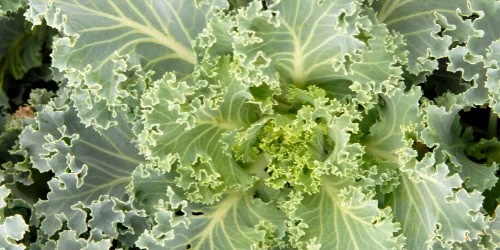
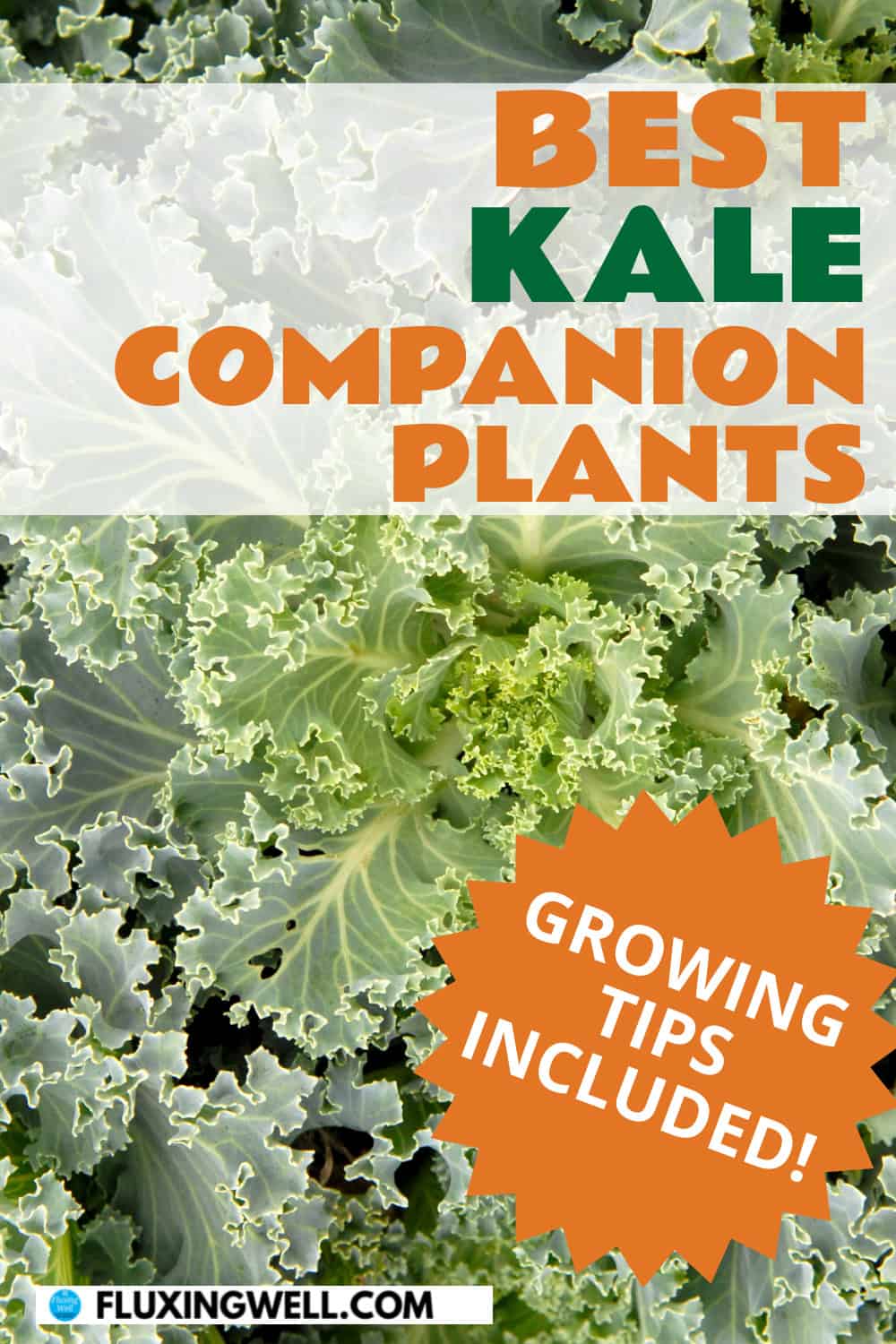
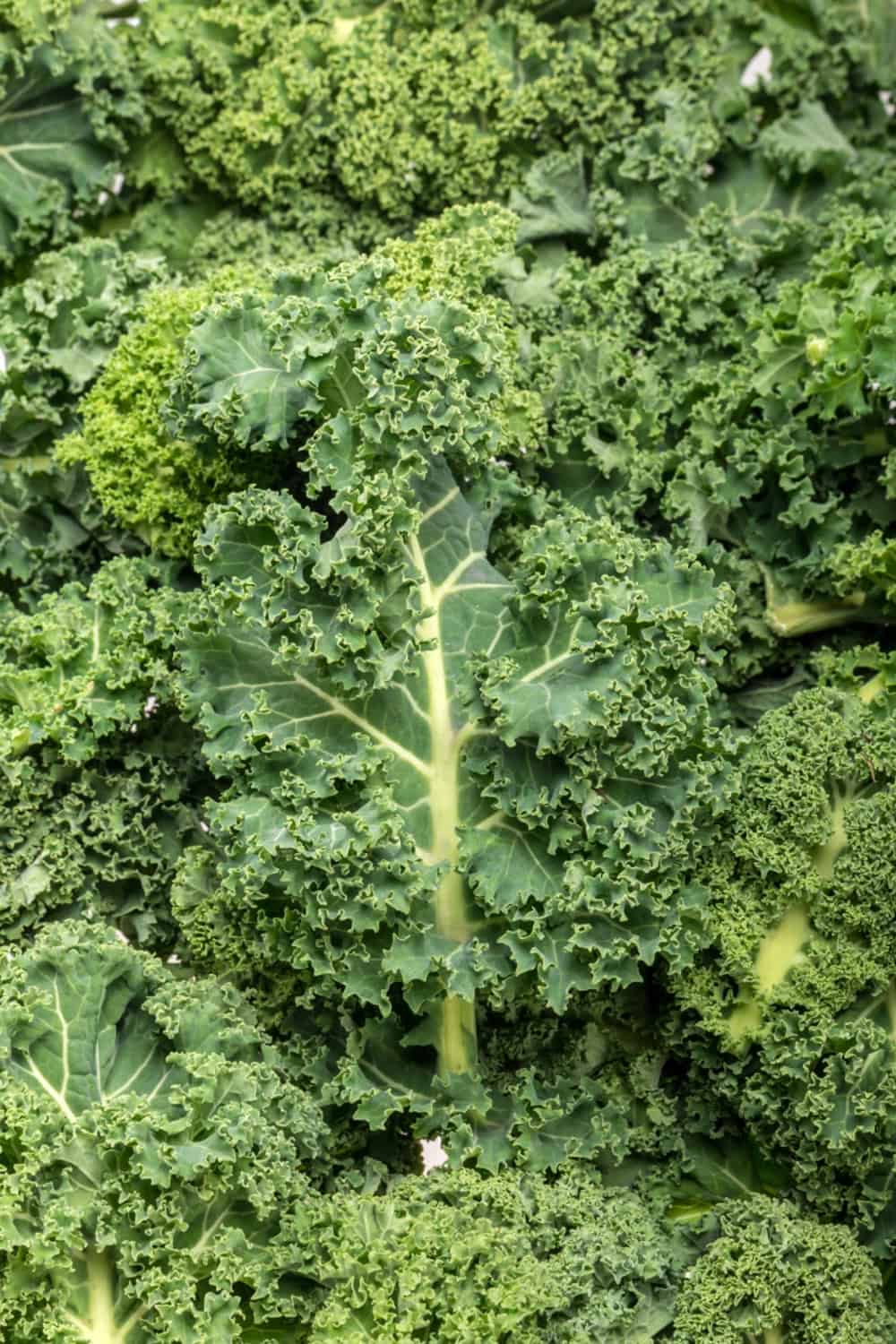
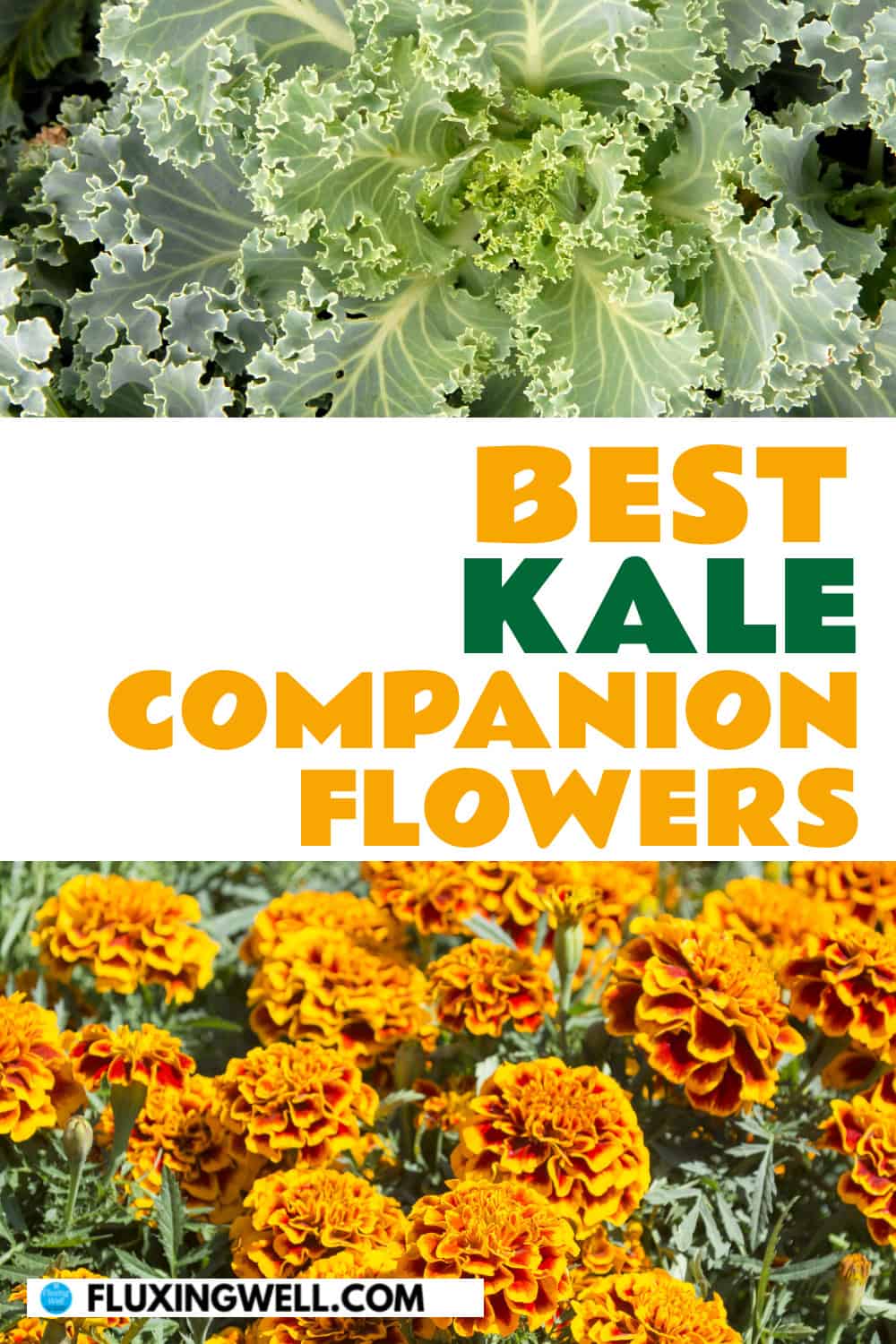

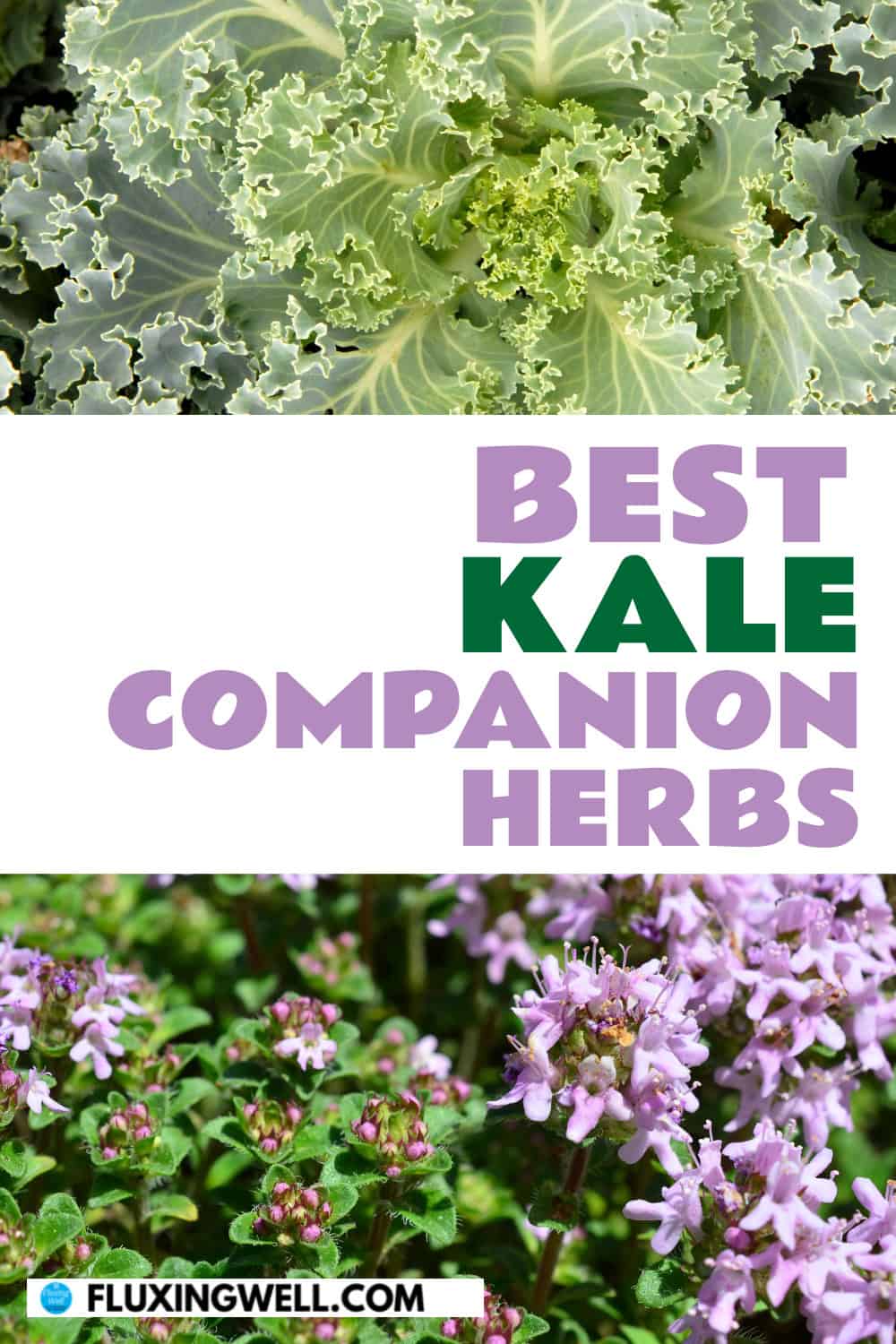
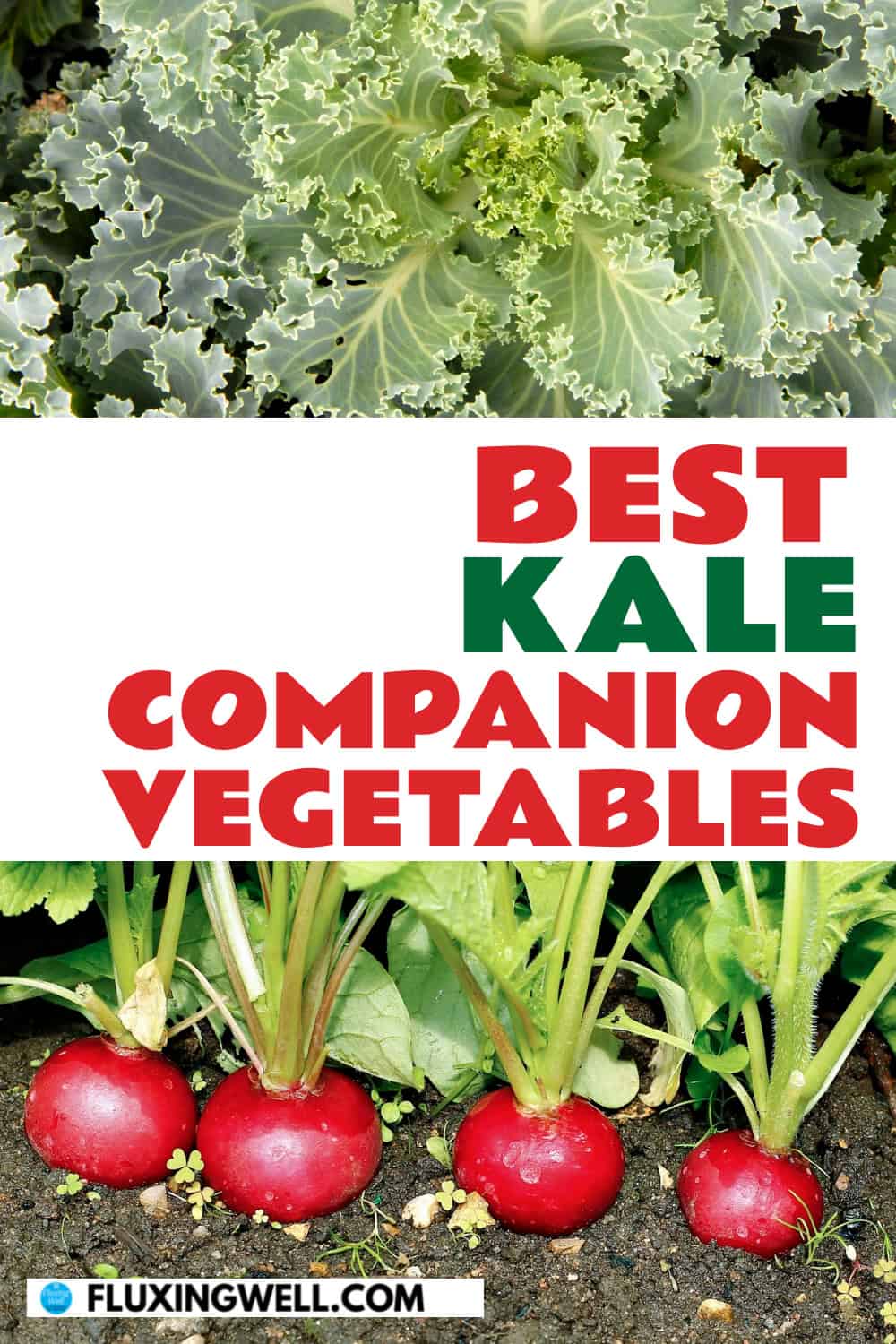
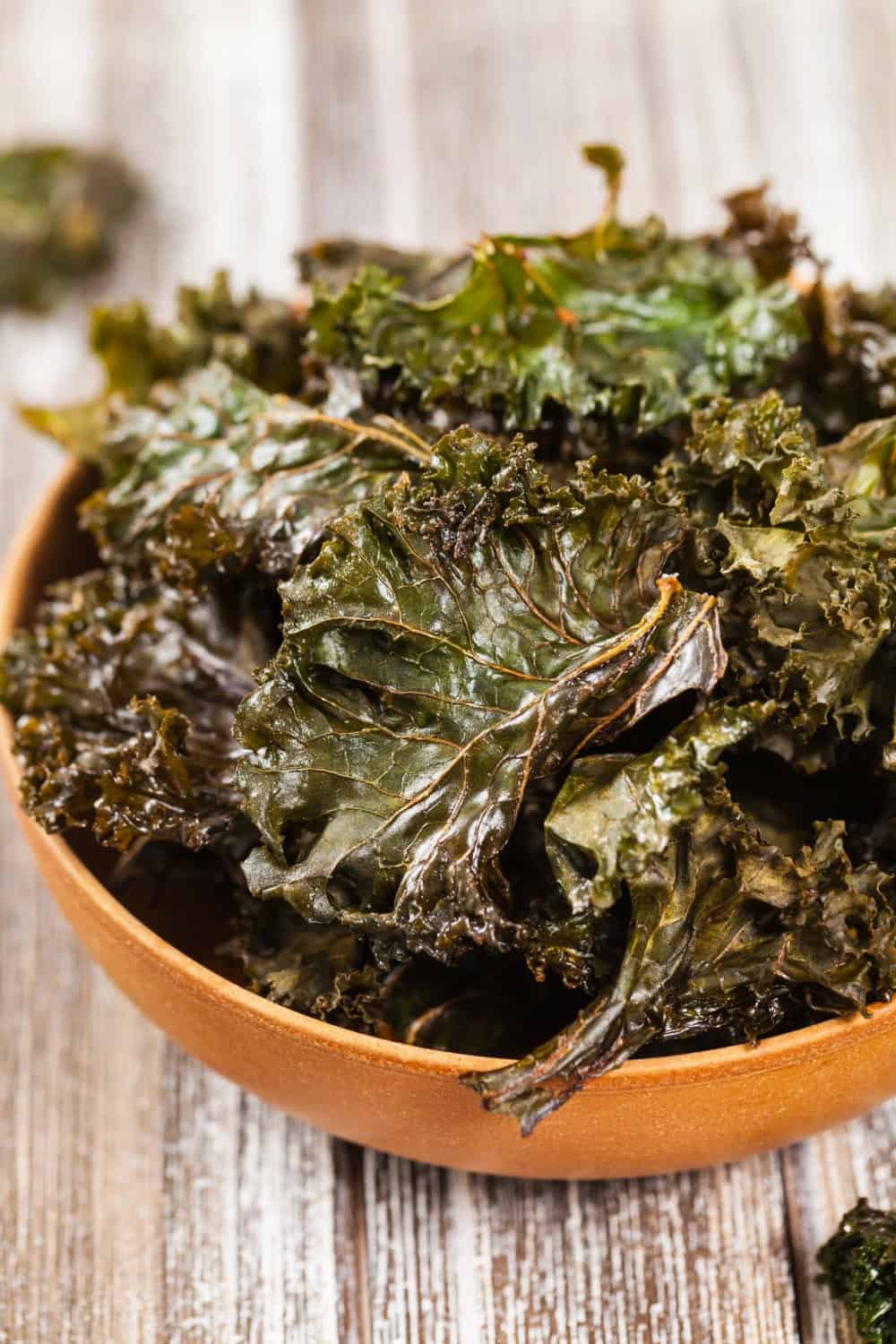



Love this best kale companion plants list. I am planning to grow one, so this knowledge will be pretty helpful.
Excellent! I’m glad this list of kale companion plants was helpful. Happy kale-growing!=)
Great post! Your tips on the best companion plants for kale are incredibly helpful. I appreciate the advice on which plants to avoid as well. This will definitely improve my garden’s health and yield!
Great! I hope you have wonderful success growing kale and its companion plants.
Thank you for highlighting the best kale companion plants and providing these great growing tips. I also appreciate the ideas on the best ways to use kale. I’ve always added it to salads but excited to try kale chips and egg dishes as well.
I’m so glad you like growing kale and that you got some good ideas from this list of companion plants. Excited for you to try kale chips!
Thanks so much for the tips about companion plants for kale. I love that you include herbs, fruit, vegetables, flowers, everything! So helpful!
Thank you! I hope you get to try growing kale along with some of the companion plants listed.